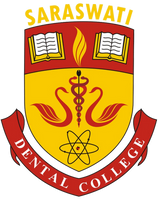Introduction
During a root canal treatment, one of the most frequent endodontic errors is the separation of an endodontic instrument. Disinfection may be hindered and access to the apical region of the root blocked if endodontic instruments get separated. It risks the effectiveness of the treatment by preventing the proper debridement of the canal apical to the fragment. The purpose of this case report was to describe the separated instrument retrieval by Modified tube technique.
Chief complain
Pain in upper front tooth region since 1 month.
History: N/H
Investigation : N/H
Diagnosis: Irreversible pulpitis with symptomatic apical periodontitis.
Treatment:
A 33-year-old male patient complained of mild, intermittent pain for 1 month which aggravated on mastication. The patient reported a history of dental treatment initiated 2 month earlier. On intraoral examination, a lingual cavity in the left maxillary incisior (21) was observed, which was tender on percussion. An Intraoral Periapical (IOPA) radiograph of the tooth revealed one separated instrument (SI) in coronal third of canal and periapical pathosis. Based on the clinical and radiographic analysis, a diagnosis of Previously Initiated Therapy was reached upon. Retreatment was initiated under rubber dam isolation. An ultrasonic tip (ProUltra ultrasonic tip No. 2) was used to achieve straight-line access to the SI so that the coronal portion of the SI could be visualized through a dental operating microscope (ProErgo, Carl Zeiss Meditec). A 22-gauge (0.7-mm-wide) hypodermic needle with a No. 25 H-file was used to remove SI (Figure 1b). The needle was modified by flattening its tip and roughening its smooth lumen with a small, tapered fissure bur. The modified needle was rotated counterclockwise under minimum apical pressure to cut a groove around the coronal end of the SI. The needle was secured around the SI, the H-file was wedged carefully between the SI and the needle’s inner wall. The entire assembly (needle, H-file, and SI) was pulled out slowly in a rotational movement in clockwise direction . After retrieving the SI , the canals were thoroughly debrided, and an intracanal calcium hydroxide paste was placed. The obturation was completed followed by a post-endodontic restoration.
Conclusion:
One of the two methods for managing a separated instrument is to either go around it and traverse the entire length of the canal or clean, shape, and obturate the canal up to the coronal point of separation. Recent advances in instrument retrieval techniques have made instrument removal more predictable.





